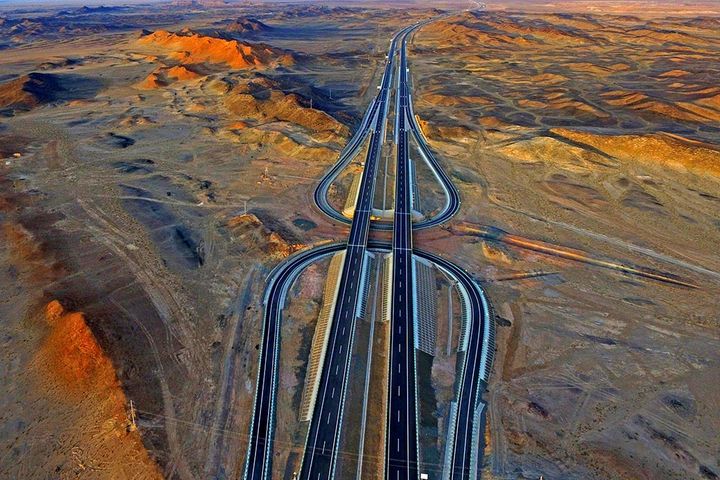 Beijing-Urumqi Expressway Fully Opens
Beijing-Urumqi Expressway Fully Opens(Yicai Global) July 17 -- The Beijing-Urumqi Expressway, construction on which commenced in September 2012, was fully operational as of July 15 with the opening of three new road sections.
The just-opened road sections lie in areas of the Gobi Desert between Linhe, in China's north-central Inner Mongolia Autonomous Region and Hami, in the northwestern Xinjiang Uygur Autonomous Region.
Natural conditions there are unforgiving. In inner Mongolia, nearly 500 kilometers of roadway traverses uninhabited areas.
"This expressway changes time and space," said Li Xi, director of the Planning Office of the Department of Transportation of the Inner Mongolia Autonomous Region. Inaccessible places in the early days of highway construction have changed greatly relying on the road and the adjacent areas have gone from being uninhabited to characteristic industrial areas, he said.
Ceke port of Inner Mongolia and Uliji port, which will open soon, rely on the main road, and have repaired the connection between the industrial park and the port, so that the road and industrial park are combined, Li noted. Goods delivery through the park has become very convenient, coupled with low land costs, a group of industrial parks based on the coal chemical industry are emerging.
The Beijing-Urumqi Expressway stretches a total of 2,540 kilometers. After the project's completion, it opened the major land route connecting Beijing and the northwest of Inner Mongolia, north of Gansu and Xinjiang, which is an important component of the country's Belt and Road initiative. It has shortened the existing road between Beijing and Urumqi by nearly 1,300 kilometers.